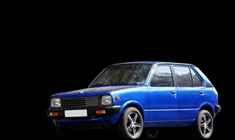News
Visited the Dachau concentration camp in Germany: A photologue
There’s so much more that could be said and written about Dachau—its stories, its survivors, its dark legacy.
BHPian speedster786 recently shared this with other enthusiasts:
I had flown into Munich on official work—a buzzing city filled with charming architecture, efficient trams, and the scent of pretzels wafting through the air. Over the weekends, I explored various parts of Europe. But one place—just a short train ride away—called to me in a way no castle or cathedral ever could.
Dachau.
Not just a location. A wound in the world's memory. And I knew I had to go.
In March 1933, Europe—and the world—changed forever.
Adolf Hitler rose to power, not quietly, but with a thunderous ambition. Within days of becoming Chancellor of Germany, the machinery of terror began to turn. He had a plan—and they knew exactly what they were doing. Just weeks after taking office, the first Nazi concentration camp was ordered into construction.
And that’s where I stood—Dachau—the blueprint of what would become an unimaginable horror across Europe.
When I reached the entrance of the Dachau Concentration Camp Memorial Site, I froze. There it was—the infamous gate, with the cold, wrought iron inscription: "Arbeit Macht Frei" — Work sets you free. I had seen those words in books before. But here, in person, they cut like a blade.
From the station, thousands of souls who had been condemned made their final walk—or were trucked in—towards this place.
And it was through these very gates—past the cold, ironic sign “Arbeit Macht Frei”—that they entered this hell on earth.
The camp was guarded round the clock—24/7, by ruthless SS officers. There were alarm systems, gun towers, and an electrified perimeter fence. Escape was not an option. Hope barely a whisper.
Inside one of the buildings stood the interrogation rooms. Designed not to extract truth, but to break spirit. Here, behind those walls, dignity was stripped as cruelly as the skin off one’s back.
As I approached the camp, I noticed memorials on either side of the entrance, each honoring those who played a role in liberating this place of horror. One particularly moving marker was dedicated to the U.S. 20th Armored Division and the 7th Army, who freed the camp on April 29, 1945.
Their arrival turned the final page of one of history’s darkest chapters—and ensured the world would never forget.

Â
The Roll Call Ground – A Place of Daily Pain
As I walked through the gates of Dachau, the first place I saw was a big open ground called the roll call area or Appellplatz.
This was where prisoners had to line up every morning and evening, no matter the weather—hot sun, cold wind, rain, or snow.
They had to stand in perfect rows of ten, completely still, while the guards counted them.
If someone had died during the night, the other prisoners were forced to carry the dead body and stand it up, just so the numbers matched.
Some days, the count lasted only a few minutes.
Other days, the prisoners had to stand there for two or three hours, without moving, even if they were sick, tired, or freezing.
If someone moved or fainted, they could be punished badly.
Standing there today, I could feel the pain in the air.
I imagined what it must have been like—thousands of tired and scared people, standing in silence, surrounded by guards with guns.
It wasn't just a roll call.
It was a way to break their spirit. A way to show them they had no control.
Even though it’s just an empty ground now, it still tells a very powerful story.
A story of suffering, survival, and sadness that should never be forgotten.


What must it have been like... to walk through these gates, not knowing if you’d ever walk out again?
From the time Dachau was built in 1933 until it was finally liberated in 1945, more than 200,000 people were brought here.
Men, women, people of all faiths and backgrounds—political prisoners, Jews, priests, teachers, artists—anyone who didn’t fit into the brutal regime’s idea of “right.”
They passed through these same gates I just walked through.
Some may have looked around, hoping to find mercy.
Others may have held back tears, trying to stay strong.
But the truth is—most never had a choice, a voice, or a chance.
The weight of their pain still lingers in the silence of this place.
Even after all these years, you can feel it in the wind, in the walls, and in the silence between footsteps.
Just after entering the gates of Dachau, the first building you come across is the Maintenance Building. This is where all newly arrived prisoners were taken.
It wasn’t part of the original camp—it was actually built by the prisoners themselves between 1917 and 1938.
Inside, there were different sections: a kitchen, a clothing supply room, baths, and workshops. In the west wing, there was a “shunting room”—this is where the registration process began. Prisoners were processed, given numbers, and stripped of their identity.
One chilling detail stands out—on the roof of this building, in large bold letters, it said:
“There is a path to freedom.”

Today, this Maintenance Building has been converted into a museum.
It’s no longer a place of cruelty, but one of remembrance. A place that says, loud and clear—never again.
The first thing you see is the vast network of concentration camps.

I came across a sign that caught my attention—“Rauchen verboten.”
It translates to “Smoking prohibited.”
Inside the museum, there are several displays showcasing artifacts that belonged to those who were once imprisoned at Dachau.
One display in particular stood out. It included a photograph of a man who was held here, along with a few of his personal belongings.

This room was where the prisoners' baths were located.
It was the final step in the admission process. After registration, the new arrivals were brought here to shower and receive their camp uniforms.
Corporal punishment was a routine practice at Dachau.
Sadly, this very shower room was not only used for bathing but also became a place where prisoners were beaten and tortured. While such punishments happened throughout the camp, this room witnessed its share of cruelty
Prisoners were forced to bend over this wooden trestle, where they were beaten with bullwhips, sticks, or whatever else the guards could use to cause pain.
Many prisoners passed out from the beatings, only to be woken up and made to go through the torture all over again.
What you’re looking at is actually a replica of the original gate. The real one was built by camp prisoners back in 1936.
In 2014, something truly shocking happened—a group of people broke into the Dachau Memorial site and stole the original gate. It was an unthinkable act, deeply disrespectful to the memory of all who suffered here.
Thankfully, in 2016, an anonymous tip led police to the city of Bergen, Norway, where the gate was found. In February 2017, it was finally returned to Dachau, and today, the original is preserved safely, while this replica stands in its place.
The perimeter security at Dachau was methodically designed to both prevent escape and psychologically break the prisoners:
Prohibited Zone (Neutral Zone): The green lawn area you mentioned was known as the "neutral zone." Prisoners were forbidden from entering it, and stepping onto it was effectively a death sentence, as guards had orders to shoot immediately.
Barbed Wire and Ditches: Past the neutral zone, there was a deep ditch and barbed wire entanglements to physically obstruct any movement forward.
Electric Fencing: Beyond the barbed wire stood a high-voltage electric fence, adding another deadly layer.
Guard Towers: The seven towers placed along the perimeter were manned with guards who had orders to shoot anyone attempting escape.
Final Patrol Path: Outside of all this was a patrol path used by SS guards, ensuring any breach would be quickly dealt with.
In this horrific environment, many prisoners, facing unbearable conditions and no hope of escape, did indeed choose to run into the neutral zone or throw themselves against the electric fences as a form of suicide. It was tragically referred to by some as the “barbed wire death,” and it underscores just how dire and inhumane the conditions were.

It might be easy to think that each prisoner had their own bed, but that wasn't the case. In reality, many people were crammed into one small space, lying close together on beds filled with straw. Many of them were sick, especially with typhus and other diseases.
Typhus spreads through lice. The way lice got into the camp was that they were running out of clothes here, so they brought in clothing from Auschwitz. That clothing had lice on it, which then spread through the camp and caused the typhus outbreak.
Unimaginable medical experiments were carried out on prisoners here, mainly in blocks 1 and 3. Some of these experiments were related to malaria, where prisoners were deliberately infected to test possible treatments. Others were designed to study how the human body reacts to high altitudes—they used pressure chambers to simulate those conditions.
There were also cruel experiments on hypothermia, where prisoners were exposed to freezing temperatures to see how much the body could endure. These people were forced to suffer through horrific conditions, all in the name of so-called research. It was an extreme level of cruelty that’s hard to even imagine today.



This building once stood right here. At one point, animals were used here to make uniforms for the Luftwaffe (the German Air Force). In 1947, a disinfection facility was built in this area to clean prisoners' clothing.
But in the spring of 1944, the SS set up a so-called "barrack" here—and this added even more suffering. It was a bordello, where female prisoners brought from Ravensbrück were forced into prostitution. It was another cruel and inhumane part of what happened in this camp.
As you walk through the memorial, you're moving down a dark path. When you enter, it feels like you're stepping into a deep, dark space. In the middle of that darkness, there's a white strip of marble that leads all the way to an opening in the ceiling.
At the top, there's a menorah, and a beam of light shines down from it. This light symbolizes that even in a place as dark as Dachau, there was still hope.
For many who were imprisoned here—no matter their religion—it was their faith that helped them survive through such a terrible time.
There is a Catholic monument at Dachau called the "Mortal Agony of Christ Chapel." It was dedicated in 1960, thanks to the efforts of Bishop Johann Neuhäusler, who helped make it happen.
In the summer of 1940, foreign prisoners began arriving at Dachau. As more prisoners came in, the number of deaths started to rise. Because of this, the Nazis planned to build a crematorium just outside the camp walls to dispose of the bodies.
It’s estimated that around 11,000 prisoners were cremated in this very oven.

There was a gas chamber at Dachau, but it was never used for its intended purpose—mass extermination. Still, standing here gives us a sense of what could have happened if the war had continued and the camp had kept operating. It’s a chilling reminder of how much worse things might have become.
When the soldiers from the 45th and 42nd Infantry Divisions arrived at Dachau, just imagine being an 18 or 20-year-old walking up to the crematorium—and seeing piles and piles of bodies lying there.
Even though the crematorium was meant to be in use, the bodies were still stacked up. Why? Because in February 1945, Germany faced a coal shortage, and there wasn’t enough coal to keep the crematorium running. That’s why so many bodies were left unburned.
I noticed that some people throw coins into the water at Dachau. It seems to be a gesture of remembrance or reflection, maybe even a silent prayer or wish. Even in a place marked by so much suffering, small acts like this can be a personal way for visitors to show respect, hope, or mourning.

There’s so much more that could be said and written about Dachau—its stories, its survivors, its dark legacy. But even a short visit leaves a heavy weight on your heart. This place stands as one of the saddest chapters in human history, a reminder of how far hatred and power can go when left unchecked.
May we never forget.
Read BHPian comments for more insights and information.


















